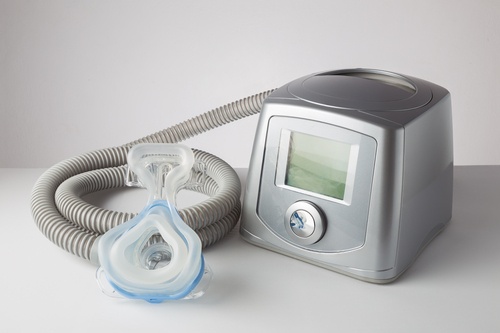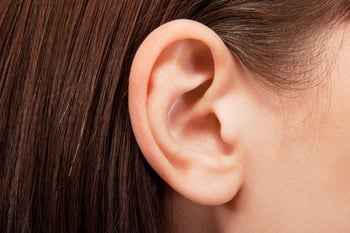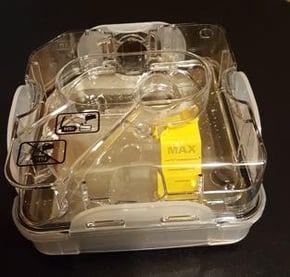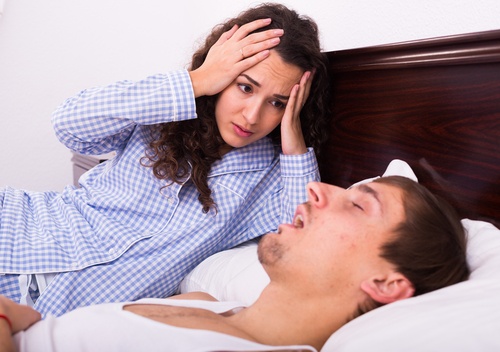 CPAP machines save lives! There are a great many advantages to using CPAP, and few disadvantages. One disadvantage may be the noise coming from the CPAP machine and CPAP mask that can keep you awake at night. These noises are easily fixed. Read on.
CPAP machines save lives! There are a great many advantages to using CPAP, and few disadvantages. One disadvantage may be the noise coming from the CPAP machine and CPAP mask that can keep you awake at night. These noises are easily fixed. Read on.
Dr. Sullivan Saves the Day!
If you think your CPAP is noisy, picture this: It’s June 1980. For the previous several months, Dr. Colin Sullivan, an Australian physician, had been experimenting with the idea of using continuous positive airway pressure (CPAP) to eliminate sleep apnea.
In trial runs he basically glued masks onto pug dogs (the ones that snore and snort) and administered pressurized air to them with a vacuum cleaner motor so they would stop snoring and could breathe through the night.
One day a human patient came in with extremely severe sleep apnea. Dr. Sullivan wanted to do an emergency tracheotomy on the man, but the patient refused.
Even though the CPAP-vacuum cleaner had not been used on humans, the doc offered the patient a night with the noisy vacuum cleaner motor to see if it would help him. The patient accepted.
The mask was attached to the patient’s face with a fast setting silicone sealant, and Dr. Sullivan controlled the air pressure. The patient awoke in the morning feeling more vibrant and refreshed than he had in years. After that, people lined up to get the “vacuum cleaner motor cure!” Birth of the CPAP!
CPAP Machines Now
Of course, since that fateful event, CPAP machines have been improved, reducing that blasting 70 decibel vacuum cleaner motor noise to a quiet, whispering 26 decibels.
CPAP machines can still make noise. The older models have a tendency to vibrate, hum, and be noisy. So if you have an older model, you may want to consider buying or having your insurance company purchase a new machine for you.
Perceiving Sound
Some people have extremely keen hearing and are annoyed at the slightest sound coming from a CPAP device. Women and children can hear higher tones than men. Others do not have such sensitive hearing. So whether a CPAP sound is disturbing or not depends on the individual’s perception.
If your CPAP’s natural sound is just too loud for you, try putting the CPAP further away from your bed. You can get ten foot tubing or use two attachable six foot tubes.
However, do not use a hose longer than 12 feet because the air pressure will not sustain itself moving over such a long distance from machine to mask.
Things That Make CPAP Go Bump in the Night
Placing your CPAP machine below your ear level will help reduce the sounds. It is not recommended that you put your CPAP on the floor, but some people do. If you do place your CPAP on the floor, be sure there is no carpeting, drapes, or other material that is blocking the air intake area.
Be creative in your quest to be healthy. One man drilled a hole in his bedroom wall, put the CPAP in the next room and ran the hose through the hole. Whatever works, right?!
Keep your CPAP away from dusty areas. Check the air filter on your CPAP. This little filter keeps dirt out of the motor. When the filter gets really filled with dust and dirt, the motor will begin working harder and may make sounds. Make sure the filter is clean and unblocked. Change filters according to the manufacturer’s recommendation.
If your machine vibrates, you may alleviate the sound by placing a small towel under the machine. Again, do not let the towel block the air intake area.
If you hear a gurgling sound, the humidifier may need more or less water in it. Adhere to the maximum fill line on the humidifier, and you probably won’t hear gurgling.
CPAP machines have a feature that allows the air pressure to reduce when the patient is taking a breath in. This feature is known as A-FLEX, C-FLEX or EPR (expiratory pressure relief). Some patients and bed partners find the sound of this increasing and decreasing air pressure to be annoying.
To mask the sound, you could get a white noise machine, use a fan, or play some relaxing music. If all else fails, ear plugs can always be used to eliminate the annoying noise.
My CPAP Mask is Farting and Whistling
It is not always easy to tell where a sound is coming from. A farting or whistling sound may be heard in the night (other than from your bed partner!). Both sounds are more than likely coming from a mask than the CPAP machine. Sounds occur when there is a leak at the mask site, when the seal is not quite complete, usually near the eye or mouth, or from the exhalation port.
The most common type of leak problem concerning a CPAP mask is a seal leak. This occurs when the air inside the mask is leaking out between the mask and the facial skin. It is important to address any mask leak because they affect the integrity of the air pressure.
If the leak is significant, the CPAP may not have the ability to deliver adequate pressure to keep your airway open. A leak may also impair the machine's ability to detect what is going on with you, thereby not responding to your respiratory needs properly. A leak blowing into your eye can also cause dry eye and other eye problems.
When the air is leaking out of your mask, a simple fix is to slightly pull the mask away from the face and then let it come back to the mask. This will get rid of any creases that have formed on the silocone gel part of the mask and eliminate the mask. You may need to do this a few times. You can also just move the mask around slightly to reseal the mask to your face.
People have a tendency when having a mask leak to tighten the mask. This may be helpful in eliminating leaks, but overtightening the mask may cause more leaking to occur. So be careful of this.
Leaks may also occur because the mask is worn or old and needs to be replaced. Masks generally can be replaced every six months and your durable medical equipment (DME) company can assist you with getting a new mask.
It is very important that you do not cover up the exhalation port where the air is designed to come out of the mask. This port expels the carbon dioxide your body has produced. Blocking that exhalation port will cause you to rebreathe your own carbon dioxide and can be dangerous to your health.
Summary
CPAP machines are hard-working devices that last years and provide quality service with minimal maintenance. The original CPAP machine 36 years ago was a noise-producing lifesaver, but today CPAPs are quiet and/or silent—and still lifesavers! Noise coming from the CPAP mask may require mask adjustment or replacement, and noise from the CPAP machine may indicate a need for replacement, maintenance or relocation.
If you are new to CPAP, just like anything else new, it may take some getting used to the sounds that the CPAP makes during operation.
If the natural sound of the CPAP is disturbing to a sensitive-hearing person, masking the sound with white noise, a fan or relaxing music may be the answer for you.
Keep in mind that that CPAP sound is the sound of life, unlike loud snoring which is not.
Sources:
CPAP Newsletter: What’s New In Machines Series: The Sound Factor, http://www.cpap.com/DisplayNewsletter/44/Whats-New-In-Machines-Series-The-Sound-Factor.html
www.mayoclinic.org
http://www.easybreathe.com
CPAP Mask Leak Problems. http://www.sleep-apnea-guide.com/cpap-mask-leak.html
Image Credit:
www.shutterstock.com









Leave a comment